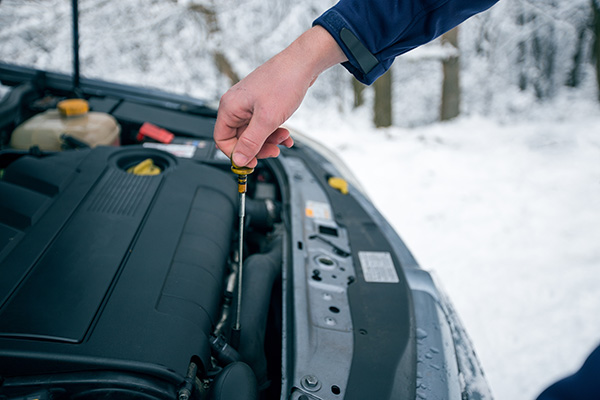
The first real snowfall in Saskatoon arrives with a mix of excitement and reality checks. Tires spin on that thin layer of early-season ice, windows fog up faster than you remember, and small maintenance items reveal themselves at the worst time. A short, focused checklist now will save headaches when temperatures dive and roads glaze over. Here are the eight items most drivers overlook before winter takes hold.
1. Battery Health Under Real Cold Loads
A battery that seems fine in October can struggle in November. Cold weather thickens oil and raises the current needed to turn the engine. If cranking speed sounds slower than last winter, get the battery tested with a proper load test, not just a voltage check. Clean the terminals, inspect the ground strap to the body, and confirm the alternator is charging within spec. Weak batteries often fail on the first subzero morning, which is why this check comes first.
2. Tire Tread, Pressures, and True Winter Rubber
All-season tread that felt acceptable in fall can slide on packed snow. Measure tread depth and look for even wear across the face. If you run dedicated winter tires, verify they are not below the point where siping loses bite. Set cold pressures to the door placard and recheck after the first cold snap. Air contracts with temperature, so a five to ten degree drop outdoors can lower each tire by one PSI, which affects grip and stability.
3. Wiper Blades, Washers, and a Clear View
Wipers harden and streak when temperatures drop. Replace them now so the first freezing drizzle does not smear your windshield. Fill the washer tank with winter blend fluid and cycle it until the summer mix is flushed from the lines. Top up again after the first week of use. Clean the inside of the glass as well, since a film on the cabin side is a major cause of fogging in cold weather.
4. Brakes That Feel Firm in the Cold
Cold rotors and pads behave differently than warm ones in fall traffic. If the pedal feels soft after a night outside, the system may have moisture in the fluid or air in a line. Fluid absorbs water over time, lowering its boiling point and potentially creating a soft pedal during repeated stops. Have the system inspected for pad life, rotor thickness, and fluid condition. Confirm the parking brake releases fully in freezing weather so a cable does not stick and drag a rear brake while you drive.
5. Heater, Defroster, and Cabin Air Filter
The best tires in the world will not help if you cannot see. Test heat output at idle and at road speed, then switch to defrost and verify the windshield clears quickly. A clogged cabin filter restricts airflow and makes defogging slow. If the fan sounds loud but airflow feels weak, the filter or blower may be the culprit. Also check that the A/C engages during defrost mode, since the system uses it to dry the air even in winter.
6. Cooling System Strength and Hoses
Winter protection is not just about preventing freeze-ups. Coolant also raises the boiling point and protects aluminum from corrosion. Test the strength with a hydrometer or refractometer and confirm the mix matches our climate. Inspect hoses for soft spots and bulges, then look for crust around the water pump weep hole that can signal a slow leak. Replace a weak reservoir cap, since low pressure lets coolant boil at a lower temperature during long climbs or heavy loads.
7. Lights, Sensors, and Salt Protection
Short days mean more time driving in the dark. Check every exterior light, clean cloudy lenses, and carry a spare set of bulbs if your model allows easy changes. Give parking sensors and driver assist cameras a quick wipe when you fuel up, since slush masks them easily. Before the roads get salty, consider a wash and a protective spray on the underbody to slow corrosion at brake and fuel lines. A quick rinse after storms helps too, even when it feels pointless in a thaw-freeze cycle.
8. Build a Small Winter Kit You Will Actually Use
You do not need to stock the trunk like an expedition. Keep it simple and reachable:
- Compact shovel, traction mats, and a tow strap
- Warm gloves, a hat, and a blanket
- Booster cables or a compact jump pack
- Flashlight and a small ice scraper
Check expiry dates on road flares or reflectors, and place the kit where you can grab it without unloading the whole trunk.
When to Schedule a Pre-Winter Inspection
If the battery test is borderline, the pedal feels different than last winter, or the heater output seems weak, book an inspection before the first long cold spell. A quick check can catch a seeping water pump, a dragging caliper, or a slow blower motor that will fail when it is least convenient. Planning now means you are not waiting in line during the first storm while shops triage emergencies.
Be Winter Ready with Glenwood Auto Service in Saskatoon, SK
Bring us your concerns, even if they feel small. A squeak at startup or a slow defrost now can be the symptom that points to the repair that keeps you out of a snowbank later. We will walk you through what we find, prioritize any work, and set reminders that fit your schedule.
Book your first snow checklist with Glenwood Auto Service today and drive into winter with clear visibility, strong starts, and confident stops.